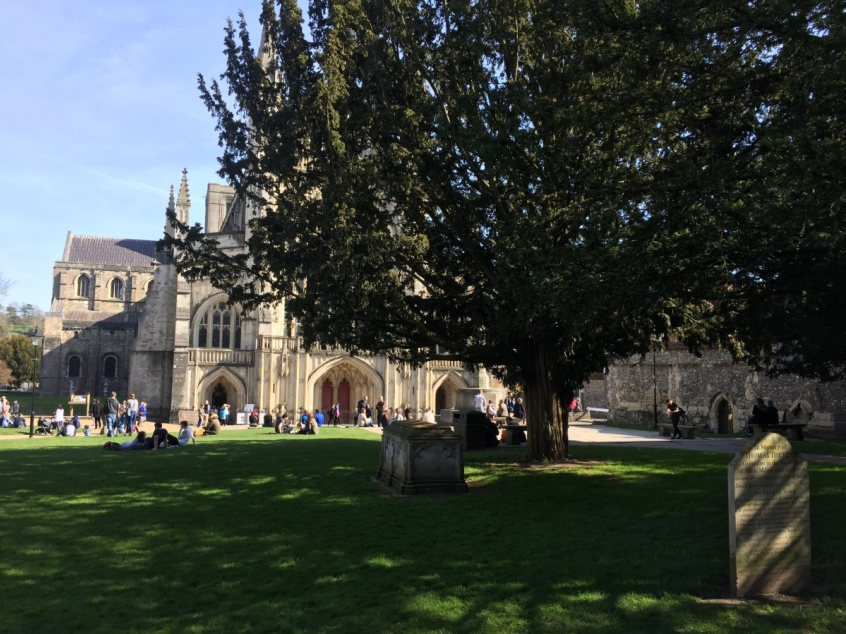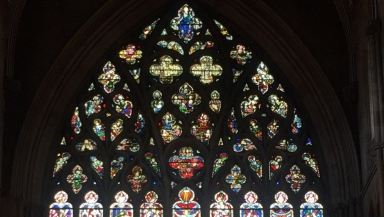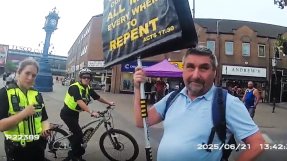
In terms of attendance, cathedrals are the modern success story of the Church of England. They seem immune from the savage decline that is decimating congregations, particularly outside London. Yet they are failing to monetise this success. And this is leading to a cash crisis in as many as half of them that could mean some even have to close.
There are 42 cathedrals in the Church of England, attended by up to 40,000 people a week – an increase of 18 per cent from a decade ago. Nearly all this is accounted for by midweek services. Festivals do exceptionally well. Easter worshippers rose by two per cent to 54,000 between 2014 and 2015 alone. Christmas attendance was 125,200 in 2015, the highest figure since 2011. And while infant baptisms are falling, in common with the wider Church, baptisms of people over one year of age are increasingly steadily.
There might be some clues to some answers in these stats, but they will not be easily embraced.
The Cathedrals Working Group, set up to examine the cash crisis facing the country's cathedrals, meets for the first time next month and cathedral deans are meeting in London this week.
Bishop of Stepney Adrian Newman told The Guardian the new working group will examine the 'potential reputational damage done to the Church if individual cathedrals fail'. He added: 'The challenges are not new, but we're looking at a new scale and depth at the moment.'
The cathedrals doing best are those like St Paul's in London, with huge congregations but also among the nation's top visitor attractions. They can afford both to charge for entry, and to let worshippers in for free. Many of the rest are struggling.
One of the problems is that they are responsible for their own financing, raised from a hotchpotch of historic funds, grants, offerings, tourism and desperate special appeals. There has to be a better way, possibly involving centralised cathedral funding and prioritising mission.

In reality, though, their problems are symptoms of a malaise at the heart of the wider Church.
How many of the Church's committed churchgoers go week after week to a small church in the countryside, with a vicar shared among many if there is an incumbent at all, canned bells and music instead of an organist and few if any in the congregation aged under 70? It is not surprising if the remaining worshippers decide at some point to decamp to the nearest cathedral. Perhaps this is when the latest interregnum goes on that bit too long because the diocese can't find the 'perfect' vicar with a spouse and family willing to work outside a fashionable city centre with a university or college student population to evangelise among. Or it might simply be because they can no longer stand the sneers of contempt on the face of their neighbour in church – and the village – when they sing out lustily to their favourite hymns. Better a cathedral. And if that fails, stay home and watch Songs of Praise for as long as that survives.
And what do they get in a cathedral? If they are lucky, a nice gift shop to browse for presents for the grandchildren, a cup of tea and Victoria sponge and then amazing music of classical concert standard in glorious Gothic surroundings – all for a pound in the collection plate, or whatever they can afford.
And the sermon might be pretty good as well. It will certainly be less likely to contain naive political comments about how awful Brexit is but somehow, how great Giles Fraser is. They might have less chance of being lectured on how they really must try and remember to give more money that week because they, individually, are responsible for building up the vicar's pension fund.
One task of the cathedrals working group should be to find and survey some of the new weekday service attenders. Are they new to the Church of England, or refugees from a failing rural parish nearby? I fear that the majority will be the latter.
So who are the parishes that are truly getting the new people in? We all know the answer to that. Overwhelmingly, they are the evangelical, reformed and charismatic, parishes along the lines of St Helen's Bishopsgate in London, and Holy Trinity Brompton. They are the churches where tithing is practised, or something very close to it, where life and mission is unashamedly evangelical. This the church that birthed the present Archbishop of Canterbury.
If there is a cathedral run along the lines of HTB, I don't know about it. Perhaps someone does and could tell me?
My view is that the Church of England really does not need yet another, expensive working group. And HTB really does need a cathedral. Can you imagine Canterbury Cathedral rocking to crashing drums, rhythm guitars and the fabulous Hillsong at 6pm every Sunday? Well, maybe not Canterbury – because then we'ld run the risk of never tempting AB Justin to London again. But Bradford, or Carlisle? Why not?
They've set up a working group but the answer is staring them in the face already. Phone Nicky Gumbel and ask him to plant a church. And let Jesus do the rest. Amen.













